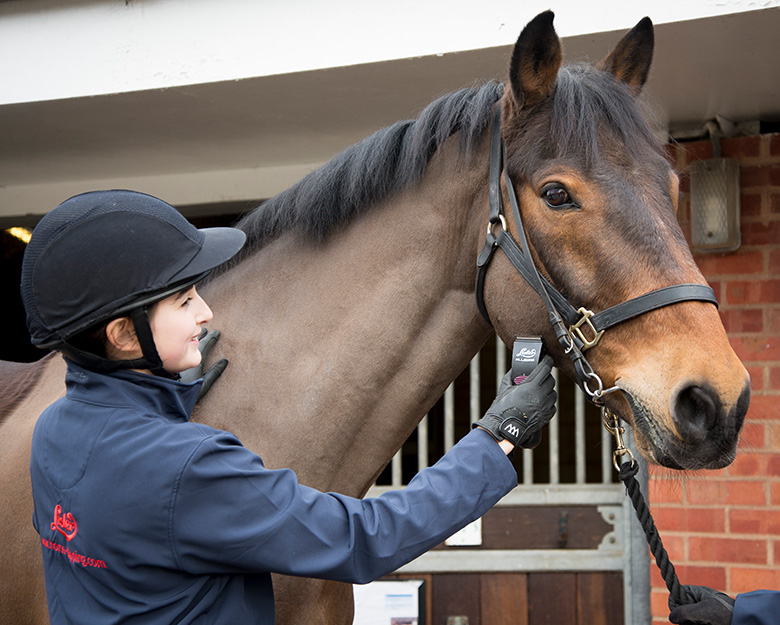Equine | 15 October 2018
Professional Tips for Using Lister Clippers
The experts at Lister provide their top tips for clipping your horse, helping make every clip as smooth and stress-free as possible.
Preparing the horse for clipping
The best preparation begins with bathing the horse to remove dirt and excess grease. If temperatures are low, groom well, spot clean or use a warm towel to lift dirt. After a thorough clean and rinse, the horse should be towel dried or allowed to stand, giving the coat time to breathe.
The environment in which the horse is clipped should be quiet and organised, with any clutter removed and necessary clipping tools easily accessible. Clipping in an environment in which the horse is familiar and comfortable has also been proven to reduce stress.
The right blades for the job
Always use Lister blades, with patented self-clearing action that prevents clogging, Lister blades offer exceptional performance and include numerous features. With a wide array of blades available, all of which leave varying hair lengths, it is important to understand the differences.
The most commonly requested blades are those of fine or medium length. Finer blades leave approximately 1.4mm of hair and are well suited for close clipping horses to allow more time for hair growth between clips, while medium blades leave around 2.5mm of hair, for horses who don’t require such a fine clip or are not exercised as often.
A number of specialist blades are also available, such as surgical blades that leave minimal hair, clipping close to the skin for veterinary work and surgical preparation. Alternatively, if a horse has a skin condition such as Cushing’s disease, you may require a blade that leaves 5mm of hair on, meaning the long hair can be clipped, but the remaining hair can be brushed over to protect the skin, and the finish resembles a ‘fine’ look.
Before use, ensure the blades are wiped clean with an oiled cloth. Do not use water or solvents as these will damage the blades.
Tensioning the blades
To ensure the correct tension, screw the tension nut down by hand until it stops. Using the marker on the tension nut as a guide, slacken the tension nut back off by 1 ½ turns to set the tension. Excessive tension will blunt the and overheat the blades, while insufficient tension will reduce cutting performance and lead to clogged blades.
Oiling the blades and clipping head
Blades should be oiled every 5-10 minutes when in use, using R15 Clipper Oil which is specially formulated for clipping. Aerosol spray lubricants contain solvents that may damage the blades or irritate the skin of the animal.
Ensure to oil the following;
- Between the cutter points – point the head upwards to spread the oil down between the blades
- The surfaces between the clipper head and top blade
- The cutter blade guide channel from both sides or via the two holes. Tilt the head sideways to spread the oil
- The heel of the cutter blade from both sides. Title the head sideways to spread oil over the rear blade surfaces
- The crank shaft and roller via the central hole. Run the clipper briefly to spread the oil, after which the clipper should be switched off with any excess oil wiped away
Frequent oiling will help keep the blades running smoothly by reducing friction and heat, preventing the blades from becoming blunt.
During clipping
Blades should be oiled every 5–10 minutes when in use and any excess hair should be brushed from the blades, clipper and animals coat. If the clipper is left on when not clipping, the blades may overheat. If the blades fail to clip, the tension should not be increased as this may damage the blades and overheat the clipper. Instead, the blades should be cleaned and oiled.
After clipping
Once the clip is complete, the clipper and blades should be cleaned. As Lister blades are manufactured in pairs, they should be stored and used together to increase their life. The clipper, blades and accessories should be stored in the case or holdall provided or should be kept in a clean, dry place, out of the reach of children.
In between clips or before storage, a line of oil should be run along the teeth of the blades and moving parts for protection. To have the clipper serviced or blunt blades sharpened, contact the Repairs team at Lister Shearing Equipment Ltd.

